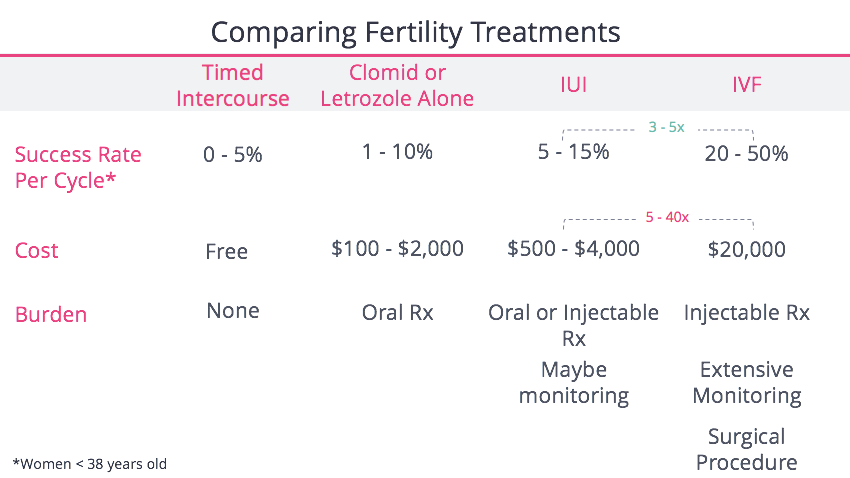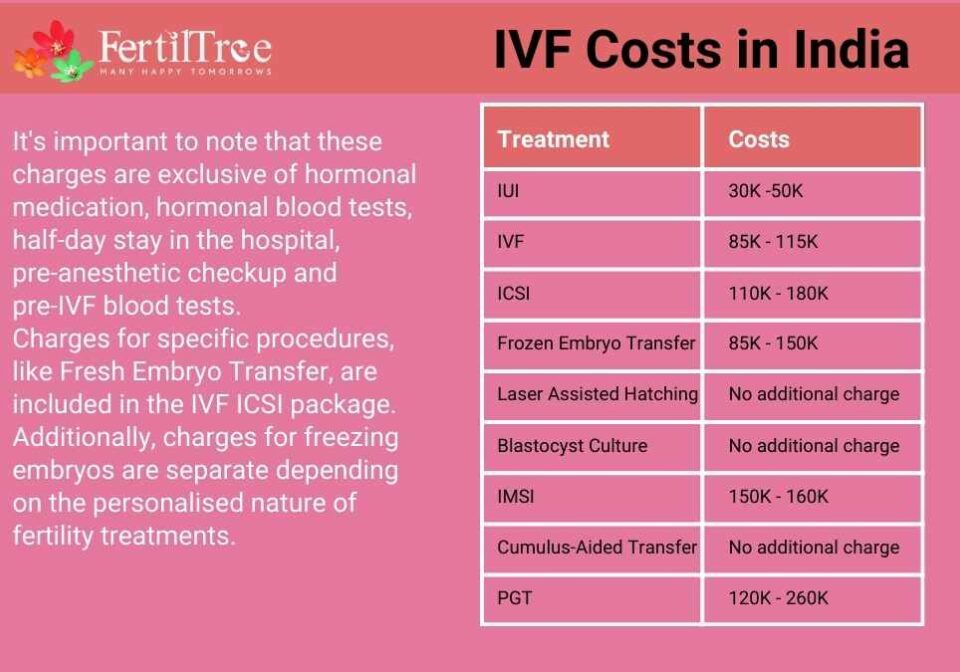
What Is Precycle Screening for IVF?
April 10, 2025
What Is the Live Birth Rate for IVF?
April 10, 2025Does Cigna Cover IVF? Your Guide to Understanding Fertility Coverage

Does Cigna Cover IVF? Your Guide to Understanding Fertility Coverage
Navigating health insurance can feel like trying to solve a puzzle with missing pieces—especially when it comes to something as personal and complex as in vitro fertilization (IVF). If you’re with Cigna and wondering whether your plan covers IVF, you’re not alone. Millions of people face fertility challenges, and the question of insurance coverage is a big one. So, let’s dive into what Cigna offers, how it works, and what you need to know to make sense of it all. This isn’t just about facts—it’s about giving you the tools to take charge of your journey.
What Is IVF and Why Does Coverage Matter?
IVF is a process where doctors help create a baby by combining an egg and sperm outside the body, then placing the embryo into the uterus. It’s a lifeline for many facing infertility—about 1 in 6 people worldwide, according to the World Health Organization. But here’s the catch: it’s expensive. A single IVF cycle can cost between $12,000 and $20,000 in the U.S., not including medications, which can add another $3,000 to $5,000. For most, that’s a huge financial hurdle without insurance.
Coverage matters because it can turn a dream into a reality—or leave it out of reach. With Cigna being one of the biggest health insurance providers in the U.S., understanding their stance on IVF is key for anyone planning this path. But it’s not a simple yes-or-no answer. Let’s break it down.
Cigna’s General Approach to Fertility Coverage
Cigna doesn’t have a one-size-fits-all policy for IVF. Instead, coverage depends on your specific plan, which is usually tied to your employer if you’re insured through work. In January 2025, Cigna announced a new partnership with Progyny, a fertility benefits company, to expand access to family-building services. This move signals they’re stepping up their game, but it doesn’t mean every Cigna member automatically gets IVF coverage.
Here’s the deal: Cigna offers fertility benefits in two main ways:
- Traditional Plans: These vary widely. Some cover diagnostics (like testing to figure out why you’re not getting pregnant), medications, or basic treatments like intrauterine insemination (IUI). IVF? That’s less common unless your employer opts in.
- Progyny Partnership: Starting in fall 2025, many self-funded employer plans will include IVF, egg freezing, surrogacy, and more through Progyny’s “Smart Cycle” design. This focuses on cycles of care rather than dollar limits, which could mean more flexibility.
So, does Cigna cover IVF? Maybe—if your plan includes it. The best way to find out is to check your policy details or call Cigna directly. But don’t stop there—keep reading for the nitty-gritty.
How to Check If Your Cigna Plan Covers IVF
Figuring out your coverage doesn’t have to be a headache. Here’s a step-by-step guide to get answers:
- Grab Your Policy Documents: Look for your Summary of Benefits and Coverage (SBC) on Cigna’s website or app. Search for terms like “infertility,” “IVF,” or “assisted reproductive technology” (ART).
- Call Customer Service: Dial the number on your insurance card. Ask: “Does my plan cover IVF? What about medications or egg retrieval?” Be specific—they’ll need your plan ID.
- Talk to HR: If you’re insured through work, your employer decides what’s covered. Ask your HR rep if IVF is part of the package.
- Check with Progyny: If your employer uses Progyny (or plans to in 2025), visit their site or call them. They’ll explain how many cycles you get and what’s included.
✔️ Pro Tip: Write down who you talk to and what they say—dates, names, everything. Insurance can be tricky, and having a record helps if there’s a mix-up later.
❌ Watch Out: Don’t assume “infertility treatment” means IVF. Some plans stop at diagnostics or meds, leaving IVF uncovered.
What Cigna Typically Covers (and What It Doesn’t)
Based on Cigna’s public info and real-life stories online, here’s what you might expect:
Covered Under Some Plans
- Diagnostic Tests: Blood work, ultrasounds, or semen analysis to pinpoint infertility causes.
- Medications: Drugs like Clomid or gonadotropins to boost ovulation or sperm production.
- IUI: A simpler procedure where sperm is placed directly in the uterus.
- IVF (Sometimes): Egg retrieval, fertilization, and embryo transfer—usually with limits like 3 cycles or a $50,000 lifetime max.
Usually Not Covered
- Experimental Treatments: Things like preimplantation genetic testing (PGT) unless medically necessary.
- Non-Medical Costs: Travel, storage fees for frozen embryos, or donor eggs/sperm unless specified.
- Surrogacy/Adoption: Traditional plans rarely cover these, but the Progyny deal might change that.
A 2023 study by Mercer found that 43% of large U.S. employers offer IVF coverage, up from 36% in 2020. With Cigna’s Progyny tie-in, they’re likely aiming to meet this growing demand. But if your plan doesn’t include IVF, you’re not out of options yet—keep reading.
The Progyny Factor: A Game-Changer for 2025
Cigna’s new offering with Progyny is worth a closer look. Unlike traditional dollar-based limits, Progyny uses “Smart Cycles”—units of care that cover specific treatments. For example:
- 1 Smart Cycle might include an egg retrieval and one embryo transfer.
- Extras like egg freezing or doula support could be bundled in, depending on your employer’s setup.
Why’s this cool? It’s more predictable. You won’t hit a random dollar cap mid-cycle and get stuck paying out of pocket. Plus, Progyny’s data shows 58% higher success rates compared to national averages, thanks to their network of top fertility clinics.
Real talk: This rolls out in fall 2025 for self-funded employers (companies that pay claims directly but use Cigna to manage them). If your job’s with a smaller firm or a fully insured plan, you might not see this perk. Ask HR if they’re jumping on board.
State Laws and Mandates: Do They Help?
Where you live can make a difference. Some states have laws requiring insurance to cover infertility treatments, including IVF. As of 2025, 21 states plus D.C. have fertility mandates, but they don’t all apply to Cigna plans. Here’s why:
- Fully Insured Plans: If your employer buys a standard Cigna plan, state laws might force IVF coverage. For example, New York mandates 3 IVF cycles for large group plans.
- Self-Funded Plans: Big companies often self-fund, meaning they’re exempt from state rules under federal law (ERISA). Most Cigna clients fall here, so state mandates may not help.
Check your state’s laws—Resolve.org has a handy map. If you’re in a mandate state like Illinois or Massachusetts, push your employer to comply. Even without a mandate, some companies add IVF to attract talent—61% of millennials say it sways their job loyalty, per a 2025 survey.
Real Costs Without Coverage
If Cigna doesn’t cover IVF, what’s the damage? Here’s a breakdown based on 2025 averages:
| Service | Cost Range |
|---|---|
| Egg Retrieval | $8,000 – $12,000 |
| Embryo Transfer | $3,000 – $5,000 |
| Medications | $3,000 – $5,000 |
| Genetic Testing (PGT) | $2,000 – $4,000 |
| Frozen Embryo Storage | $500 – $1,000/year |
Total for one cycle? Easily $15,000-$25,000. Multiple cycles push it higher—60% of people need more than one try, says the American Society for Reproductive Medicine (ASRM). Without insurance, it’s a gut punch, but there are ways to soften the blow.
Creative Ways to Afford IVF Without Cigna’s Help
No coverage? Don’t lose hope. People get creative every day. Here are practical ideas:
- Fertility Grants: Organizations like BabyQuest or Starfish Infertility Foundation offer thousands in aid. Apply early—funds run out fast.
- Clinic Discounts: Some offer “shared risk” programs—pay upfront, get a refund if IVF fails after a set number of cycles.
- Financing: Loans from Resolve partners or medical credit cards like CareCredit spread costs over time. Watch interest rates!
- Crowdfunding: GoFundMe campaigns for IVF are trending on X in 2025—friends and family often chip in.
- Employer Advocacy: Pitch IVF benefits to your boss. Show them stats: 70% of workers would switch jobs for family-building perks.
✔️ Success Story: Sarah, a 32-year-old teacher, got a $10,000 grant and negotiated a clinic discount, cutting her IVF cost by 40%. It’s doable with hustle.
IVF Success Rates: What Cigna’s Coverage Could Mean
Coverage isn’t just about money—it’s about chances. The CDC’s 2023 data shows IVF success varies by age:
- Under 35: 50-55% live birth rate per cycle.
- 35-37: 40-45%.
- 38-40: 25-30%.
- Over 40: 10-15% (unless using donor eggs).
With Progyny’s network, Cigna might boost those odds by connecting you to top doctors. A 2024 study in Fertility and Sterility found specialized clinics improve outcomes by 20%—fewer failed cycles, less stress.
But here’s a twist: stress itself can tank success. Research from Harvard in 2023 linked high cortisol levels to lower IVF implantation rates. If Cigna covers mental health support (many plans do), use it—therapy or mindfulness could tip the scales.
Interactive Quiz: Is IVF Right for You?
Wondering if IVF fits your situation? Take this quick quiz (circle your answers):
- How long have you been trying to conceive?
- A) Less than 6 months
- B) 6-12 months
- C) Over a year
- Has a doctor diagnosed an infertility cause?
- A) No
- B) Yes, but treatable
- C) Yes, and IVF’s recommended
- Can you afford $15,000+ out of pocket?
- A) Yes
- B) Maybe with help
- C) No way
Results:
- Mostly A’s: You might not need IVF yet—talk to a doctor first.
- Mostly B’s: IVF could be an option; explore coverage or financing.
- Mostly C’s: Push for Cigna coverage or alternative funding—it’s your best shot.
Share your score with a friend or in a comment below—what’s your next step?
Three Things Other Articles Miss
Most blogs stop at “check your plan” or “it’s expensive.” Here’s what they don’t tell you—and why it matters.
1. The Emotional Toll of Coverage Gaps
Denials hurt more than your wallet. A 2024 survey by Resolve found 72% of uninsured IVF patients felt “hopeless” after rejection, delaying treatment by 18 months on average. If Cigna says no, don’t bottle it up—join a support group on X or Reddit. Real people share real wins there daily.
2. Employer Trends Are Shifting Fast
Beyond Progyny, companies are racing to add IVF in 2025. Why? Talent wars. A LinkedIn poll showed 65% of HR leaders plan fertility perks by 2026. If Cigna drags its feet, your employer might switch insurers—or you could switch jobs. It’s a leverage point no one’s talking about.
3. Mini-IVF: A Cheaper Alternative
Ever heard of mini-IVF? It uses lower-dose meds, cutting costs to $5,000-$7,000 per cycle. Success rates dip slightly (35% vs. 50% for under-35s), but a 2023 study in Human Reproduction found it’s just as effective for certain cases—like mild ovarian issues. Ask your doc if it’s a fit; it’s rarely covered but easier to fund solo.
How to Talk to Cigna Like a Pro
Calling insurance can feel like yelling into a void. Make it work for you:
- Prep Your Questions: “What’s my lifetime max for infertility? Does it include IVF meds? Any pre-approvals needed?”
- Stay Calm: If they dodge, politely ask for a supervisor. Patience wins.
- Document Everything: Names, times, promises—email yourself a recap.
- Appeal Denials: If they say no, file an appeal with your doctor’s help. A 2024 ASRM report says 30% of appeals flip to approvals.
✔️ Example: “Hi, I’m checking if my plan, ID #12345, covers IVF cycles through Progyny. Can you confirm?”
Your Action Plan: Next Steps
Ready to move forward? Here’s your roadmap:
- Today: Log into Cigna’s portal, skim your benefits, and call them.
- This Week: Chat with HR about 2025 plans—mention Progyny.
- This Month: Research grants or mini-IVF if coverage falls short.
- Ongoing: Track state laws and employer trends—things change fast.
Poll: What’s Your Biggest IVF Worry?
Vote below—it takes 10 seconds and helps others feel less alone:
- A) Cost
- B) Success rates
- C) Insurance confusion
- D) Emotional stress
Drop your pick in a comment or on X—I’ll tally the results next week!
Beyond Coverage: Building Your Support System
IVF isn’t just medical—it’s personal. If Cigna covers it, great. If not, you’ve still got power. Surround yourself with people who get it—online forums, local meetups, even a fertility coach. A 2025 study from UCLA found strong support networks cut IVF dropout rates by 25%. You’re not in this alone.
Take Jen, a 35-year-old nurse. Her Cigna plan didn’t cover IVF, but she rallied coworkers to pitch fertility benefits. By 2026, her hospital added it. She’s now pregnant with twins. It’s proof: your voice matters.
Final Thoughts: You’ve Got This
Does Cigna cover IVF? It depends—but now you know how to find out, what to expect, and how to fight for it. Whether it’s cracking your policy, tapping new options like mini-IVF, or pushing your employer, you’re armed with more than most. This journey’s tough, but every step you take is progress. What’s your next move? Let’s keep the conversation going—share your story below!

